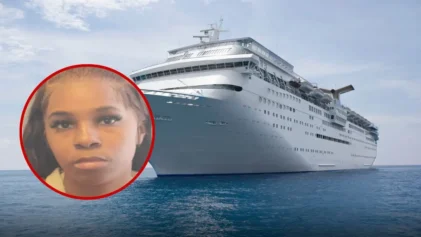
FILE – In this Friday Nov. 30, 2012 file photo, Two UN soldiers stand guard in Goma, Democratic Republic of Congo. Part of President Donald Trump’s proposed deep budget cuts in foreign aid could be significant reductions in U.N. peacekeeping missions in some of the world’s most dangerous places. On Thursday, April 6, 2017 the U.N. Security Council meets on the issue at the United States’ request. (AP Photo/Jerome Delay File)
UNITED NATIONS (AP) — Part of President Donald Trump’s proposed deep budget cuts in foreign aid could be significant reductions in U.N. peacekeeping missions in some of the world’s most dangerous places. The U.N. Security Council is meeting Thursday on the issue at the United States’ request. Here’s a look at some of the 16 current peacekeeping missions around the world, including the largest and the most likely to be squeezed:
___
CONGO
The U.N.’s largest peacekeeping mission, with more than 18,000 troops and police and more than 3,300 civilian staffers. It is also the most expensive, with a current budget of $1.2 billion. The mission, in Congo since 2010, is meant to protect civilians from conflict, notably from armed groups that roam the vast eastern region and fight over the country’s trillion-dollar mineral wealth. The mission is unique in having a force intervention brigade with a special mandate to take offensive military action against rebel groups. The Security Council last week voted to cut 500 troops after the U.S. ambassador to the United Nations, Nikki Haley, has said “we can reduce the troops tremendously.” It was the first test of Trump’s push to cut funding.
___
SOUTH SUDAN
The U.N.’s second-largest peacekeeping mission, not counting the joint U.N.-African Union one in Darfur. More than 13,000 troops and police are on the ground along with more than 2,100 civilian staffers. The current budget is $1 billion. The mission, in South Sudan since 2011, is meant to protect civilians caught in the country’s civil war under U.N. warnings of ethnic cleansing. The mission is unique in that its bases threw open their doors shortly after the conflict began and have sheltered hundreds of thousands of civilians ever since. “I don’t think any single act taken by the U.N. since 1945 has saved more lives,” Andrew Gilmour, the U.N.’s assistant secretary-general for human rights, has said. But the mission has been criticized for failing to protect civilians and foreigners, notably after fighting erupted in the capital, Juba, in July.
___
DARFUR
The only active U.N.-African Union peacekeeping mission, in Sudan’s western region since 2007. It has more than 17,200 troops and police and more than 2,800 civilian staffers. Its current budget is $1 billion. The joint mission has been under pressure to withdraw by the government of President Omar al-Bashir, who is wanted by the International Criminal Court on charges of genocide and war crimes in Darfur. The region has been witness to bloodshed since 2003, when rebels took up arms against the government in Khartoum, accusing it of discrimination and neglect.
___
CENTRAL AFRICAN REPUBLIC
One of the largest U.N. peacekeeping missions, with more than 12,000 troops and police and more than 1,000 civilian staffers. Its current budget is $920 million. The mission, in Central African Republic since 2014, aims to protect civilians from unprecedented deadly violence between Christian and Muslim rebels. It came under withering criticism in 2015 after a series of allegations of child sexual abuse by peacekeepers. The scandal led the U.N. to pursue changes in the way it prevents and investigates sexual abuse by peacekeepers and tries to hold troop-contributing countries to account.
___
MALI
The deadliest active U.N. peacekeeping mission, with at least 114 members killed since it began in Mali in 2013. It has more than 12,000 troops and police and more than 1,300 civilian staffers, with a current budget of $933 million. The mission, more than any other in the U.N. system, is focused on counter-terror work and is the frequent target of Islamic extremist groups operating in the vast Sahel region. Under former President Barack Obama, the U.S. military stepped in to help counter improvised explosive devices. Several European countries staff an intelligence cell, the first in U.N. peacekeeping, to analyze input from unarmed drones, sensor-equipped attack helicopters and special forces.
___
HAITI, LIBERIA, IVORY COAST
The U.N. peacekeeping chief has said he expects operations in the three countries to end by March 2018, which will save hundreds of millions of dollars. The Haiti mission has more than 5,900 people on the ground and a budget of $345 million. The Liberia mission has more than 1,700 people on the ground and a budget of $187 million. The Ivory Coast mission has nearly 800 people on the ground and a budget of $153 million.


